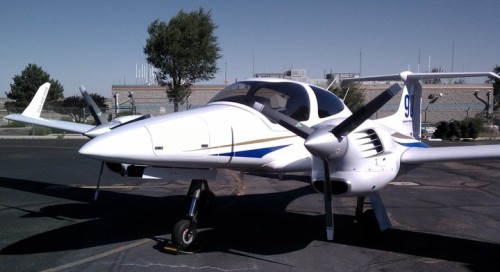4 weeks ago, I went up for a regular flight with my instructor to practice some basic attitude instrument (BAI) techniques. The sky’s were clear and it was a great day to go flying! One thing was different, a training manager (my instructor’s superior) came to observe my instructor on the flight to see how he teaches. Even though he was observing only my instructor, I felt an increase in pressure as I wanted to prove I was a good flight student and that my instructor had taught me well.
After checking my weight and balance (required for each flight to make sure the plane is not overloaded), we all got in and taxied out to the runway. In the unit lesson, I had to demonstrate a short field take-off. I taxied out on the runway, held the brakes, went to full power, released the brakes, and took off!
Everything was normal until we reached a height of 400′ AGL (above ground level), which came pretty quickly after wheels up. At that moment, the left engine started to surge 10-20% in power. We heard multiple backfires and the aircraft yawed to the left. Tower even reported smoke coming out of our engine! Having practiced engine failures in previous flights, I knew what to do. However, when an actual emergency, or abnormality, occurs, the instructor usually takes over the controls to ensure proper communication and control. After we understood what was going on, I used the positive transfer of controls and handed control to my instructor. Following my pre-takeoff brief on emergency situations, I asked my instructor if he would like me to run any checklists or aid in anyway possible. We pulled the power back to 72% and both engines were operating as normal. We decided to make a full stop and down the aircraft when we got back.
The educational experience from this abnormality was invaluable. I understood to stay calm during the entire ordeal and revert back to the outstanding training I have received, and continuing to receive, here at Embry-Riddle. Here is a picture of the plane I flew that had the problems.




